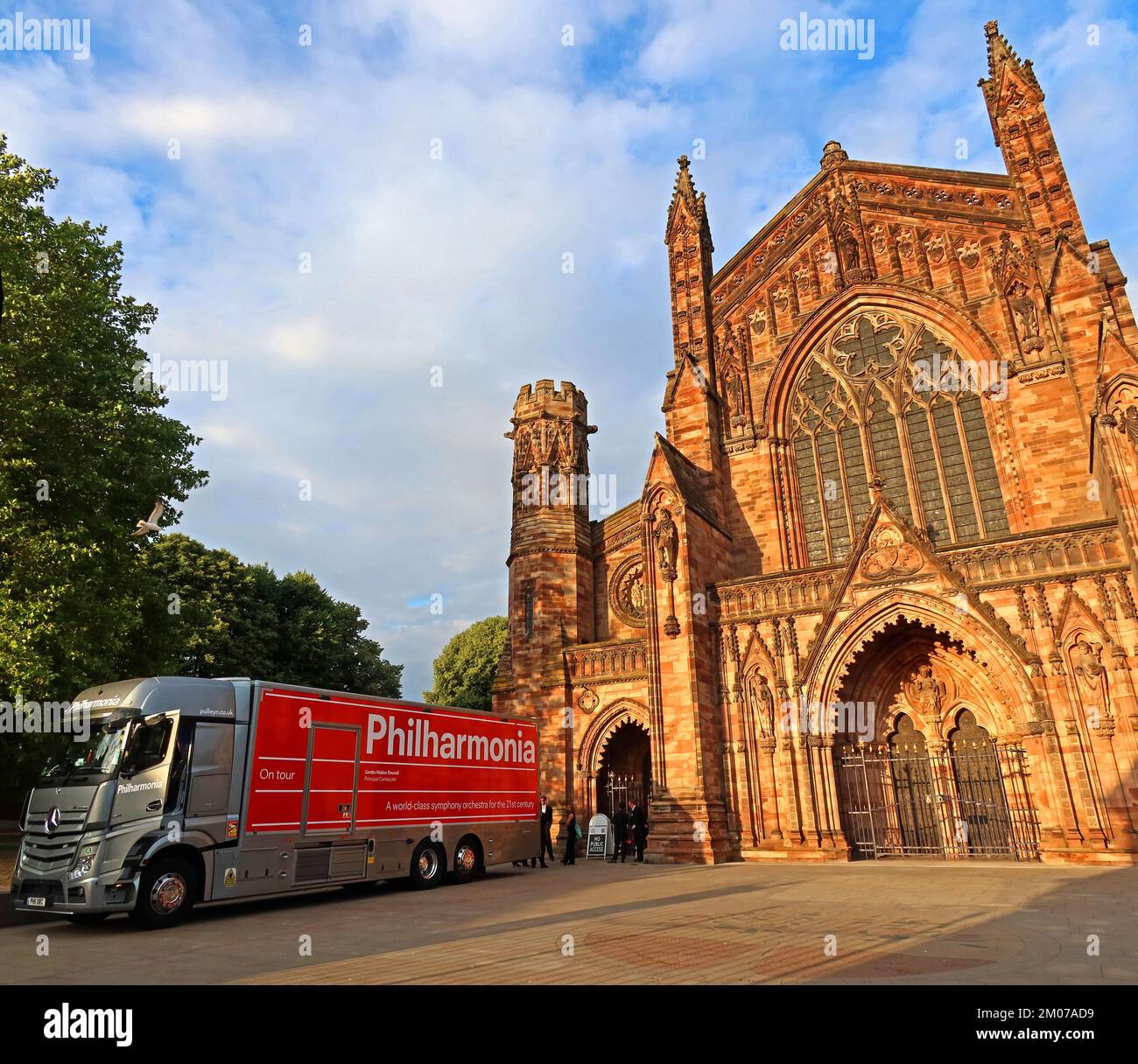Philharmonia TCF truck at Hereford Cathedral Church at sunset, 5 College Cloisters, Cathedral Close, Hereford, Herefordshire, England, UK, HR1 2NG

Image details
Contributor:
Tony Smith / Alamy Stock PhotoImage ID:
2M07AD9File size:
72.9 MB (3.4 MB Compressed download)Releases:
Model - no | Property - noDo I need a release?Dimensions:
5423 x 4698 px | 45.9 x 39.8 cm | 18.1 x 15.7 inches | 300dpiDate taken:
29 July 2022Location:
5 College Cloisters, Cathedral Close, Hereford, Herefordshire, England, UK, HR1 2NGMore information:
Hereford Cathedral is the cathedral church of the Anglican Diocese of Hereford in Hereford, England. A place of worship has existed on the site of the present building since the 8th century or earlier. The present building was begun in 1079. Substantial parts of the building date from both the Norman and the Gothic periods. The cathedral is a Grade I listed building. The cathedral has the largest library of chained book in the world, its most famous treasure being the Mappa Mundi, a medieval map of the world created around 1300 by Richard of Holdingham. The map is listed on the UNESCO Memory of the World Register. The cathedral is dedicated to two saints, St Mary the Virgin and St Ethelbert the King. The latter was beheaded by Offa, King of Mercia in the year 794 Before this, Hereford had become the seat of a bishopric. It is said to have been the centre of a diocese as early as the 670s when Theodore of Tarsus, Archbishop of Canterbury, divided the Mercian diocese of Lichfield, founding Hereford for the Magonsæte and Worcester for the Hwicce. In the 7th century the cathedral was refounded by Putta Between the years 1226 and 1246, Lady Chapel was rebuilt in the Early English style—with a crypt beneath. Around the middle of the century the clerestory, and probably the vaulting of the choir, were rebuilt, having been damaged by the settling of the central tower In the first half of the 14th century the rebuilding of the central tower, which is embellished with ball-flower ornaments, was carried out. At about the same time the chapter house and its vestibule were built, then Thomas Trevenant, who was bishop from 1389 to 1404, rebuilt the south end and groining of the great transept. In 1841 the restoration work was begun, instigated by Dean Merewether, and was carried out by Lewis Nockalls Cottingham and his son, Nockalls.